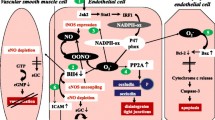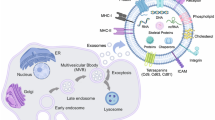Abstract
Sepsis is an acute inflammatory syndrome in response to infection. In some cases, excessive inflammation from sepsis results in endothelial dysfunction and subsequent increased vascular permeability leading to organ failure. We previously showed that treatment with endothelial progenitor cells, which highly express microRNA-126 (miR-126), improved survival in mice subjected to cecal ligation and puncture (CLP) sepsis. miRNAs are important regulators of gene expression and cell function, play a major role in endothelial homeostasis, and may represent an emerging therapeutic modality. However, delivery of miRNAs to cells in vitro and in vivo is challenging due to rapid degradation by ubiquitous RNases. Herein, we developed a nanoparticle delivery system separately combining deacetylated poly-N-acetyl glucosamine (DEAC-pGlcNAc) polymers with miRNA-126-3p and miRNA-126-5p and testing these combinations in vitro and in vivo. Our results demonstrate that DEAC-pGlcNAc polymers have an appropriate size and zeta potential for cellular uptake and when complexed, DEAC-pGlcNAc protects miRNA from RNase A degradation. Further, DEAC-pGlcNAc efficiently encapsulates miRNAs as evidenced by preventing their migration in an agarose gel. The DEAC-pGlcNAc-miRNA complexes were taken up by multiple cell types and the delivered miRNAs had biological effects on their targets in vitro including pERK and DLK-1. In addition, we found that delivery of DEAC-pGlcNAc alone or DEAC-pGlcNAc:miRNA-126-5p nanoparticles to septic animals significantly improved survival, preserved vascular integrity, and modulated cytokine production. These composite studies support the concept that DEAC-pGlcNAc nanoparticles are an effective platform for delivering miRNAs and that they may provide therapeutic benefit in sepsis.







Similar content being viewed by others
References
Torio CM, Andrews RM. National inpatient hospital costs: the most expensive conditions by payer, 2011: Statistical Brief #160. Healthcare Cost and Utilization Project (HCUP) Statistical Briefs. Rockville (MD), 2006.
Murphy, S.L., J. Xu, and K.D. Kochanek. 2013. Deaths: final data for 2010. National Vital Statistics Reports 61: 1–117.
Torio CM, Moore BJ. National inpatient hospital costs: the most expensive conditions by payer, 2013: Statistical Brief #204. Healthcare Cost and Utilization Project (HCUP) Statistical Briefs. Rockville (MD), 2006.
Angus, D.C., and T. van der Poll. 2013. Severe sepsis and septic shock. The New England Journal of Medicine 369: 2063.
Pratt, A.J., and I.J. MacRae. 2009. The RNA-induced silencing complex: a versatile gene-silencing machine. The Journal of Biological Chemistry 284: 17897–17901.
Neth, P., M. Nazari-Jahantigh, A. Schober, and C. Weber. 2013. MicroRNAs in flow-dependent vascular remodelling. Cardiovascular Research 99: 294–303.
Chistiakov, D.A., A.N. Orekhov, and Y.V. Bobryshev. 2016. The role of miR-126 in embryonic angiogenesis, adult vascular homeostasis, and vascular repair and its alterations in atherosclerotic disease. Journal of Molecular and Cellular Cardiology 97: 47–55.
Wang, S., A.B. Aurora, B.A. Johnson, X. Qi, J. McAnally, J.A. Hill, J.A. Richardson, R. Bassel-Duby, and E.N. Olson. 2008. The endothelial-specific microRNA miR-126 governs vascular integrity and angiogenesis. Developmental Cell 15: 261–271.
Fish, J.E., M.M. Santoro, S.U. Morton, S. Yu, R.F. Yeh, J.D. Wythe, K.N. Ivey, B.G. Bruneau, D.Y.R. Stainier, and D. Srivastava. 2008. miR-126 regulates angiogenic signaling and vascular integrity. Developmental Cell 15: 272–284.
Kuhnert, F., M.R. Mancuso, J. Hampton, K. Stankunas, T. Asano, C.Z. Chen, and C.J. Kuo. 2008. Attribution of vascular phenotypes of the murine Egfl7 locus to the microRNA miR-126. Development 135: 3989–3993.
Tang, R., L. Pei, T. Bai, and J. Wang. 2016. Down-regulation of microRNA-126-5p contributes to overexpression of VEGFA in lipopolysaccharide-induced acute lung injury. Biotechnology Letters 38: 1277–1284.
Fan, H., A.J. Goodwin, E. Chang, B. Zingarelli, K. Borg, S. Guan, P.V. Halushka, and J.A. Cook. 2014. Endothelial progenitor cells and a stromal cell-derived factor-1alpha analogue synergistically improve survival in sepsis. American Journal of Respiratory and Critical Care Medicine 189: 1509–1519.
Goodwin, A.J., C. Guo, J.A. Cook, B. Wolf, P.V. Halushka, and H. Fan. 2015. Plasma levels of microRNA are altered with the development of shock in human sepsis: an observational study. Critical Care 19: 440.
Zhou, Y., P. Li, A.J. Goodwin, J.A. Cook, P.V. Halushka, E. Chang, and H. Fan. 2018. Exosomes from endothelial progenitor cells improve the outcome of a murine model of sepsis. Molecular Therapy 26: 1375–1384.
Schober, A., M. Nazari-Jahantigh, Y. Wei, K. Bidzhekov, F. Gremse, J. Grommes, R.T.A. Megens, K. Heyll, H. Noels, M. Hristov, S. Wang, F. Kiessling, E.N. Olson, and C. Weber. 2014. MicroRNA-126-5p promotes endothelial proliferation and limits atherosclerosis by suppressing Dlk1. Nature Medicine 20: 368–376.
Juliano, R.L., R. Alam, V. Dixit, and H.M. Kang. 2009. Cell-targeting and cell-penetrating peptides for delivery of therapeutic and imaging agents. Wiley Interdisciplinary Reviews. Nanomedicine and Nanobiotechnology 1: 324–335.
Vournakis JN, Finkielsztein S, Pariser ER, Helton M. Bicompatible poly-β-1→4-N-acetylglucosamine. Google Patents, 2004.
Lindner, H.B., A. Zhang, J. Eldridge, M. Demcheva, P. Tsichlis, A. Seth, et al. 2011. Anti-bacterial effects of poly-N-acetyl-glucosamine nanofibers in cutaneous wound healing: requirement for Akt1. PLoS One 6: e18996.
Lindner, H.B., L.M. Felmly, M. Demcheva, A. Seth, R. Norris, A.D. Bradshaw, et al. 2015. pGlcNAc nanofiber treatment of cutaneous wounds stimulate increased tensile strength and reduced scarring via activation of Akt1. PLoS One 10: e0127876.
Kong, X.Y., Y.Q. Du, L. Li, J.Q. Liu, G.K. Wang, J.Q. Zhu, et al. 2010. Plasma miR-216a as a potential marker of pancreatic injury in a rat model of acute pancreatitis. World Journal of Gastroenterology : WJG 16: 4599–4604.
Zhou, F., X. Jia, Y. Yang, Q. Yang, C. Gao, S. Hu, Y. Zhao, Y. Fan, and X. Yuan. 2016. Nanofiber-mediated microRNA-126 delivery to vascular endothelial cells for blood vessel regeneration. Acta Biomaterialia 43: 303–313.
Eliyahu, H., Y. Barenholz, and A.J. Domb. 2005. Polymers for DNA delivery. Molecules 10: 34–64.
Bamrungsap, S., Z. Zhao, T. Chen, L. Wang, C. Li, T. Fu, and W. Tan. 2012. Nanotechnology in therapeutics: a focus on nanoparticles as a drug delivery system. Nanomedicine (London, England) 7: 1253–1271.
Narasimhan, P., J. Liu, Y.S. Song, J.L. Massengale, and P.H. Chan. 2009. VEGF stimulates the ERK 1/2 signaling pathway and apoptosis in cerebral endothelial cells after ischemic conditions. Stroke 40: 1467–1473.
Gavard, J., and J.S. Gutkind. 2006. VEGF controls endothelial-cell permeability by promoting the beta-arrestin-dependent endocytosis of VE-cadherin. Nature Cell Biology 8: 1223–1234.
Hao, D., W. Xiao, R. Liu, P. Kumar, Y. Li, P. Zhou, F. Guo, D.L. Farmer, K.S. Lam, F. Wang, and A. Wang. 2017. Discovery and characterization of a potent and specific peptide ligand targeting endothelial progenitor cells and endothelial cells for tissue regeneration. ACS Chemical Biology 12: 1075–1086.
Acknowledgements
We thank Ametria Harrison and Pengfei Li for their technical support throughout this project. Additionally, we thank Robin Muise-Helmericks and Amanda LaRue for their experimental expertise and project support.
Funding
This work was supported by the NIGMS 1R01GM113995 (HF). This work was also supported by grants NHLBI 5T32HL007260–39 (JJB), 1K23HL135263-01A1 (AG), and UL1 TR 001450 (PVH), and financial and technical supports were provided in part by Marine Polymer Sciences, Inc. Burlington, MA (JV and MD).
Author information
Authors and Affiliations
Author notes
John Vournakis is deceased. This paper is dedicated to his memory.
- John Vournakis
Corresponding author
Ethics declarations
Conflict of Interest
The authors declare that they have no conflict of interest.
Ethics Approval
Animal studies were conducted in accordance with the Guide for the Care and Use of Laboratory Animals published by the National Institutes of Health and were approved by the Institutional Animal Care and Use Committee at the Medical University of South Carolina.
Rights and permissions
About this article
Cite this article
Jones Buie, J.N., Zhou, Y., Goodwin, A.J. et al. Application of Deacetylated Poly-N-Acetyl Glucosamine Nanoparticles for the Delivery of miR-126 for the Treatment of Cecal Ligation and Puncture-Induced Sepsis. Inflammation 42, 170–184 (2019). https://doi.org/10.1007/s10753-018-0882-8
Published:
Issue Date:
DOI: https://doi.org/10.1007/s10753-018-0882-8




